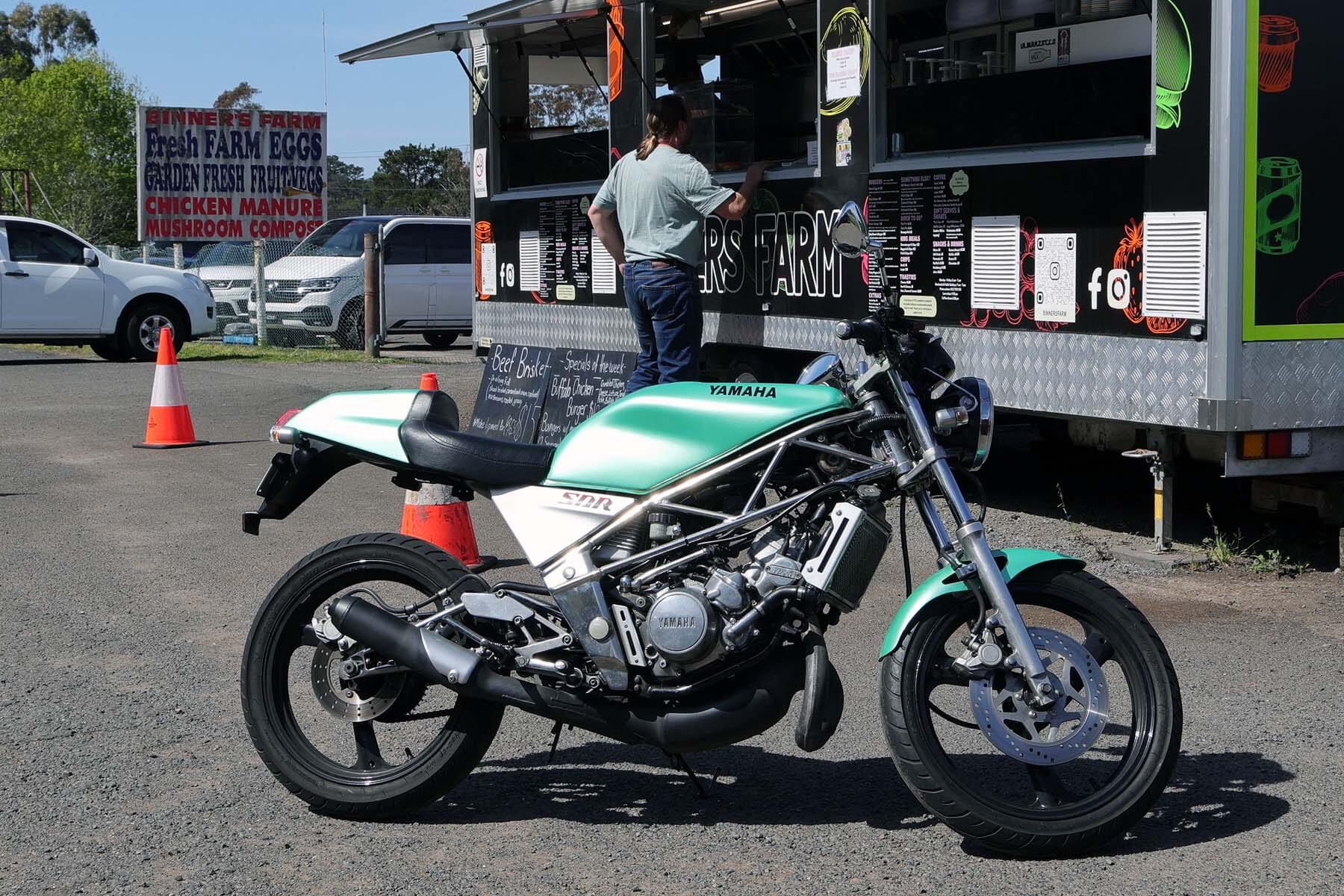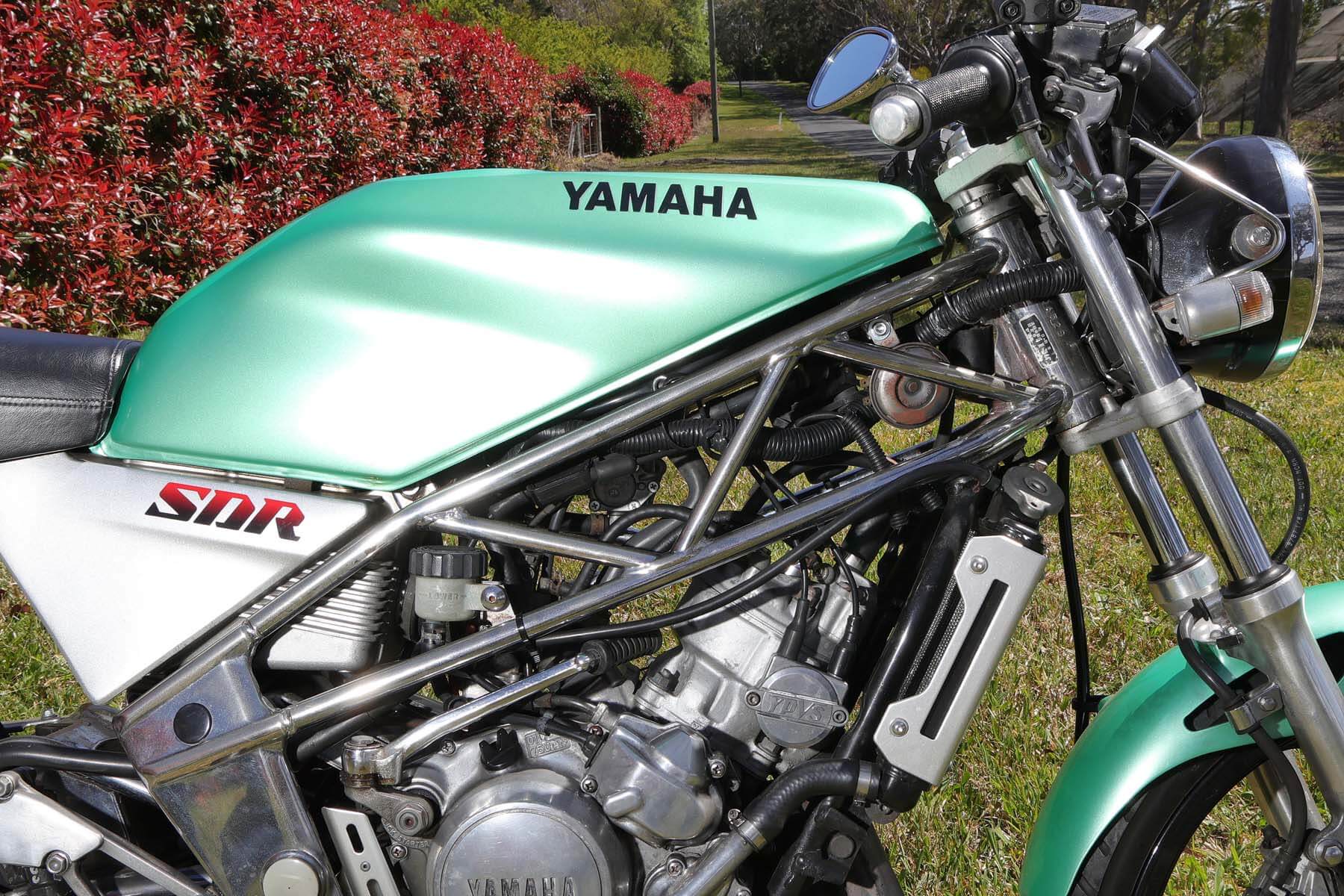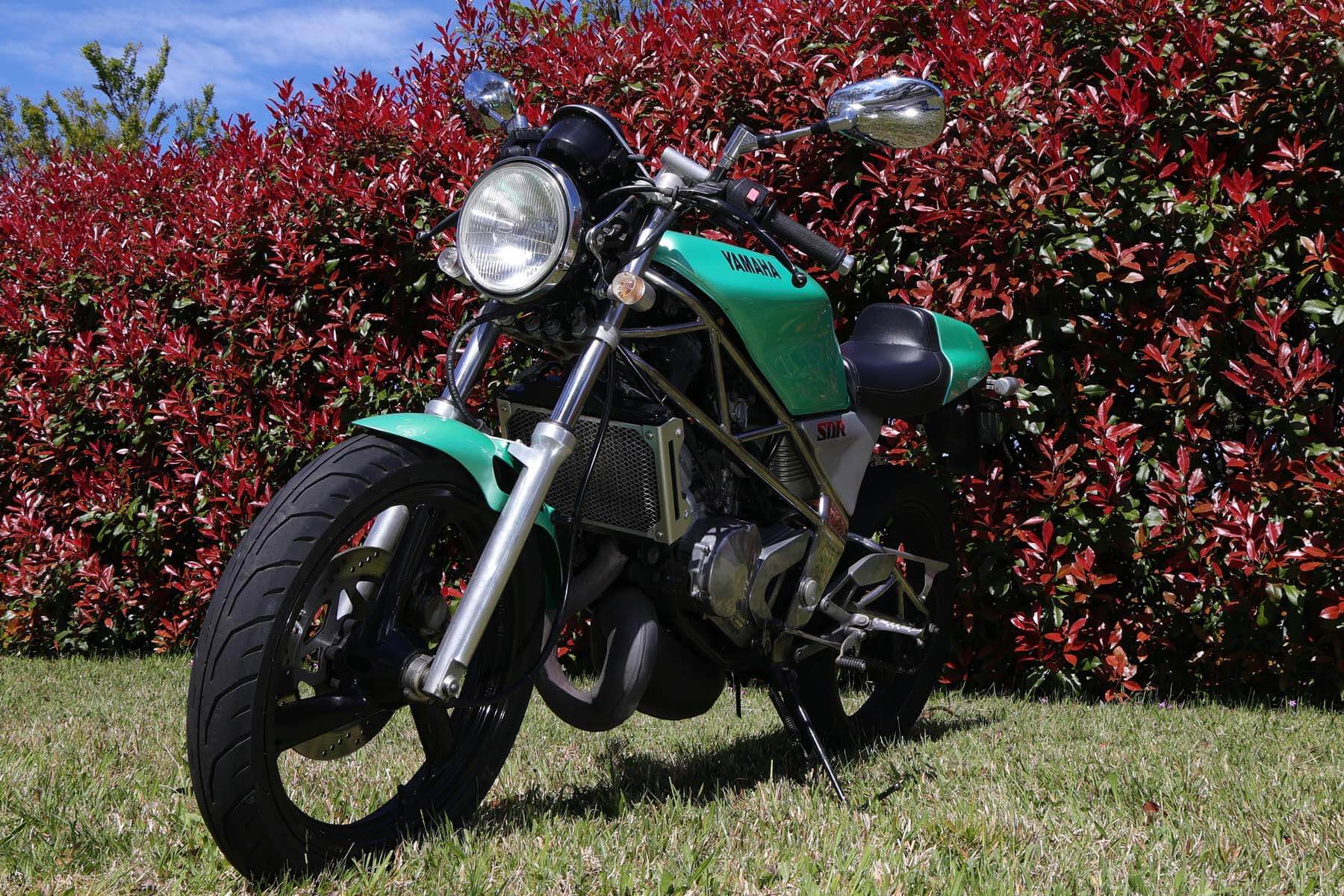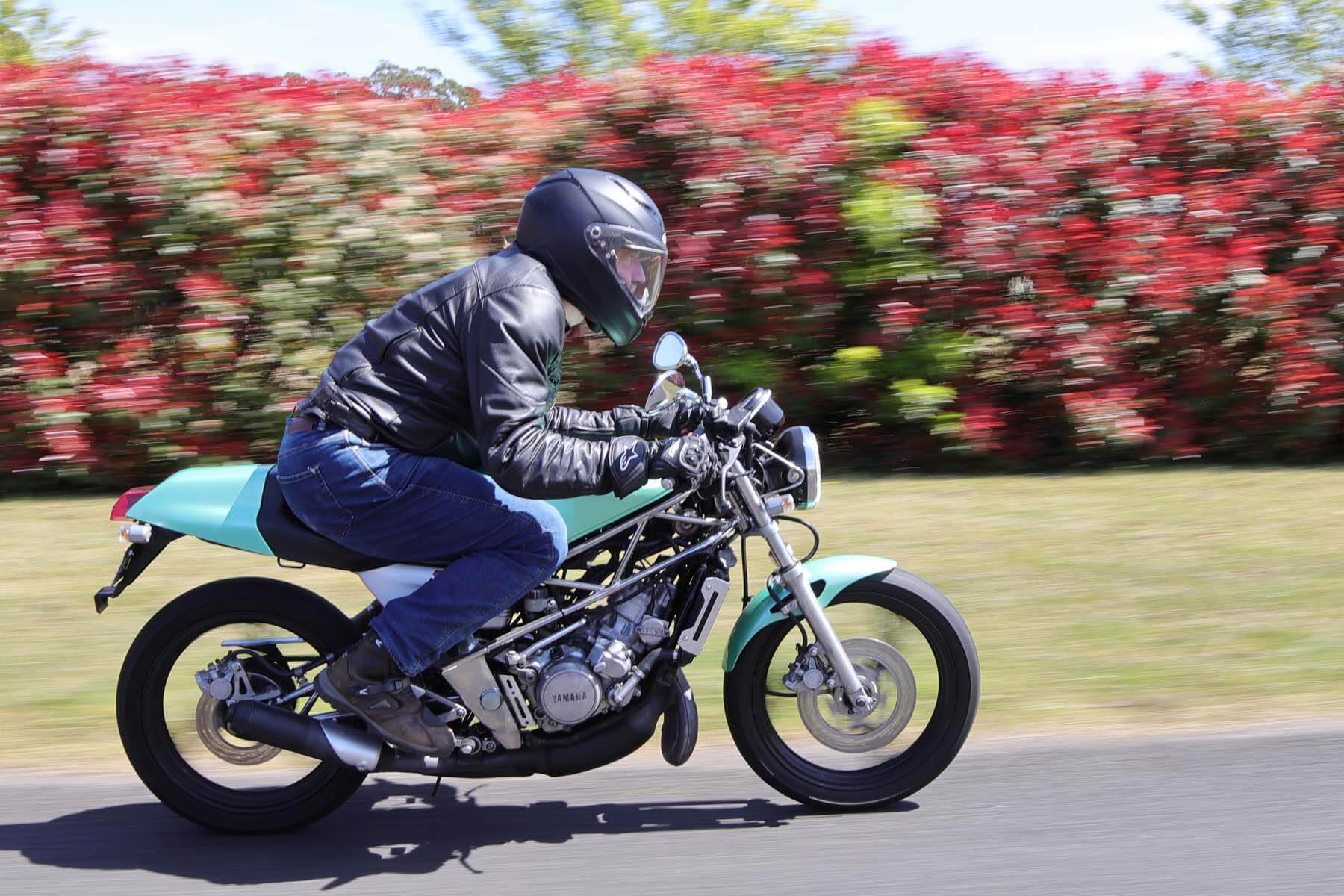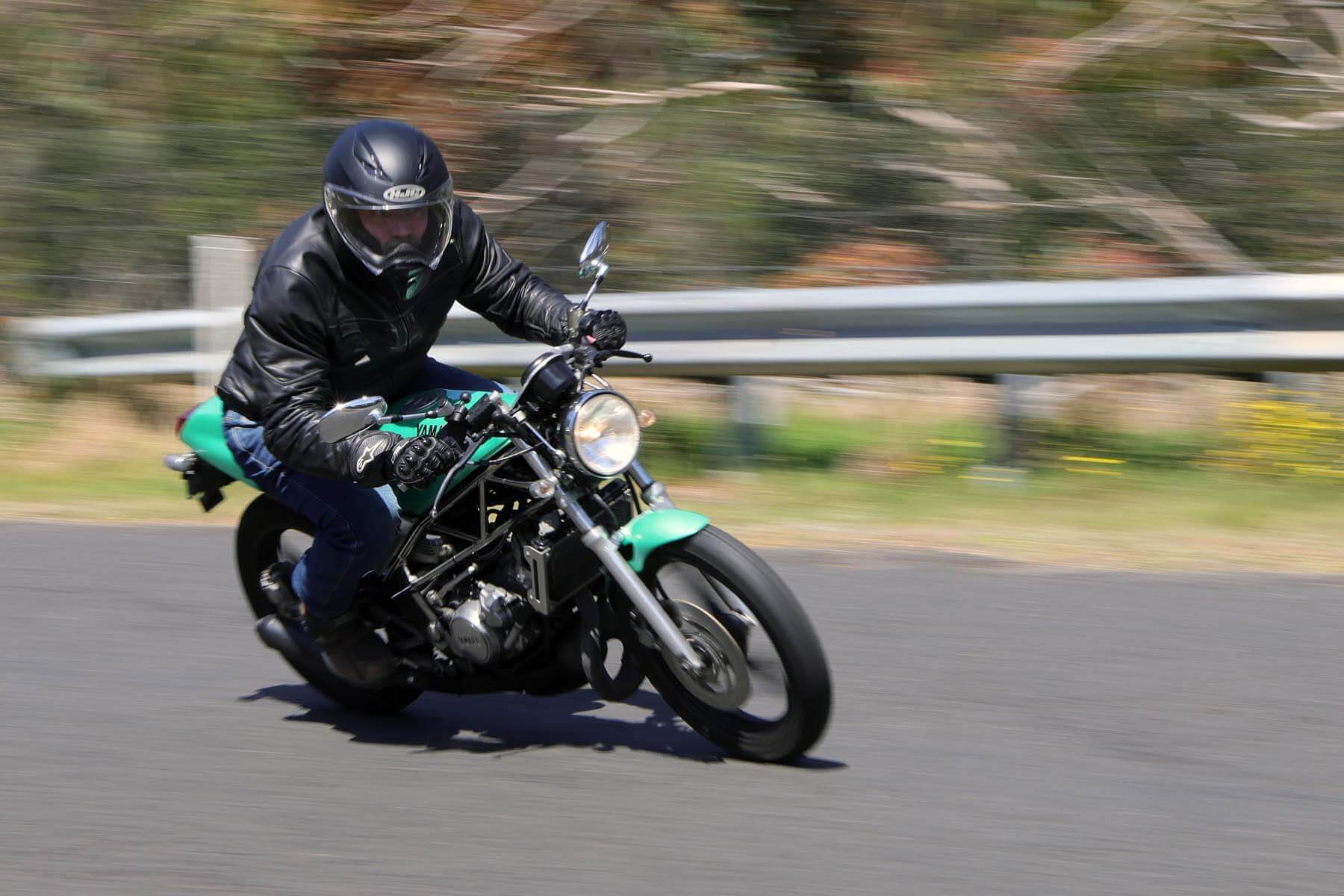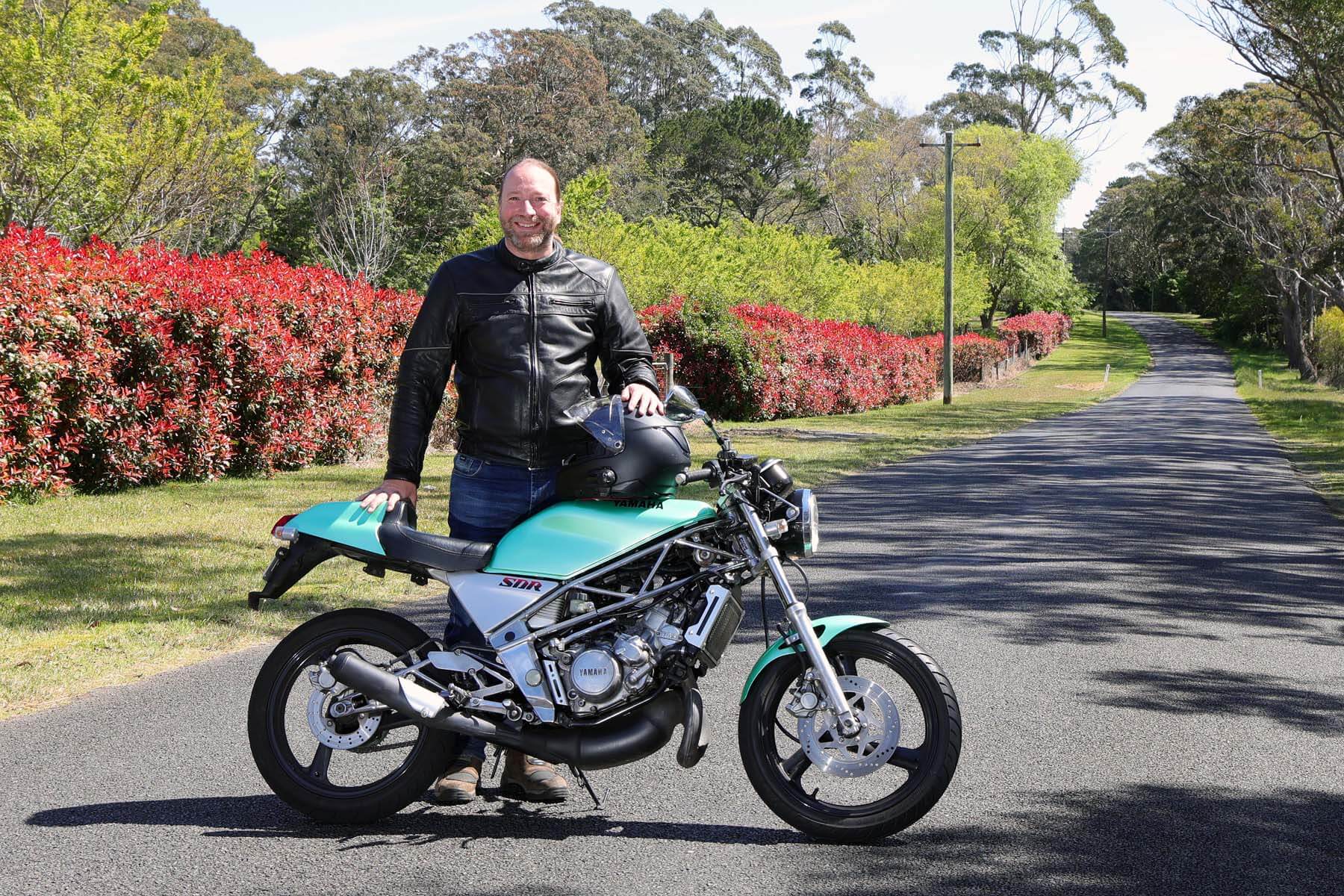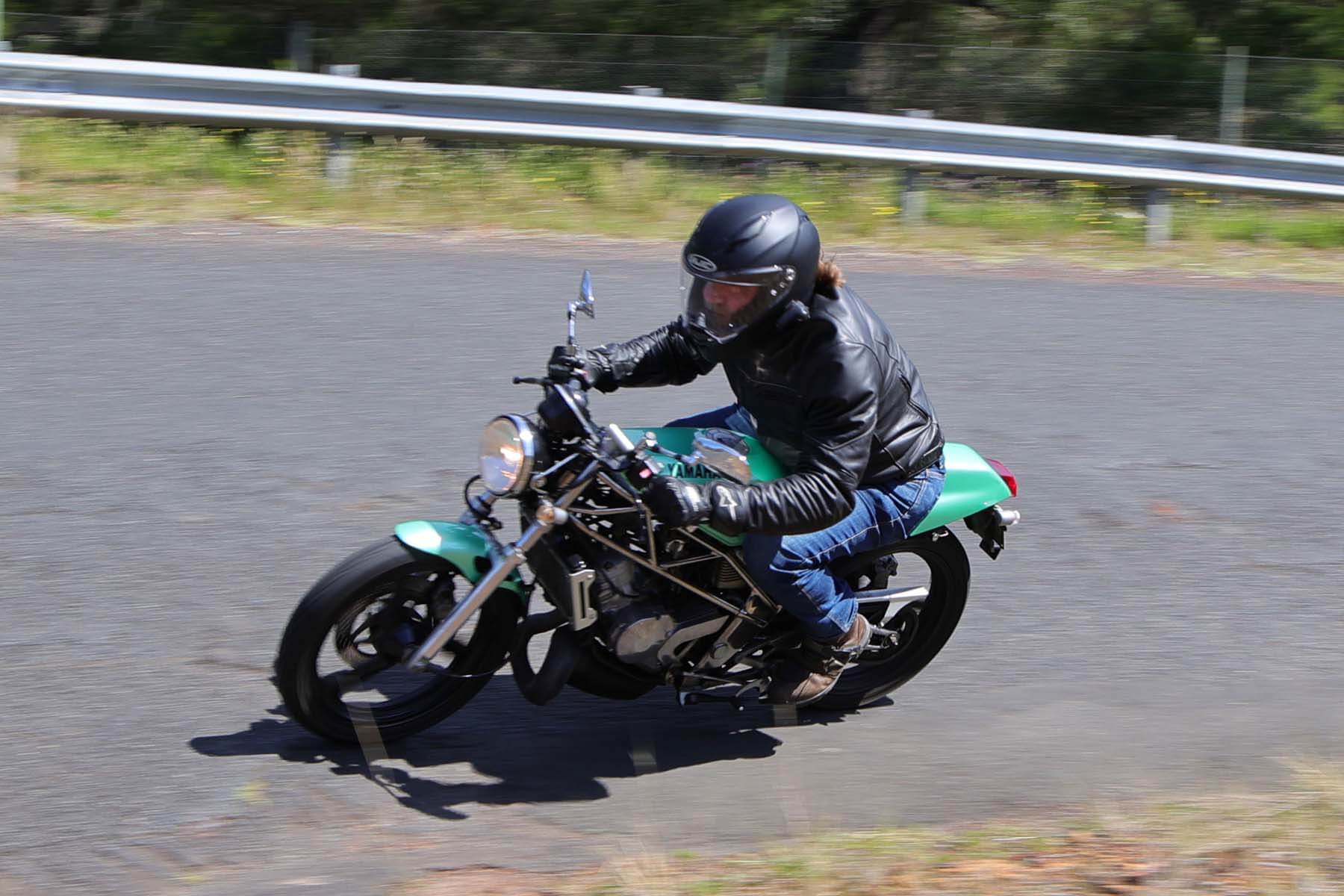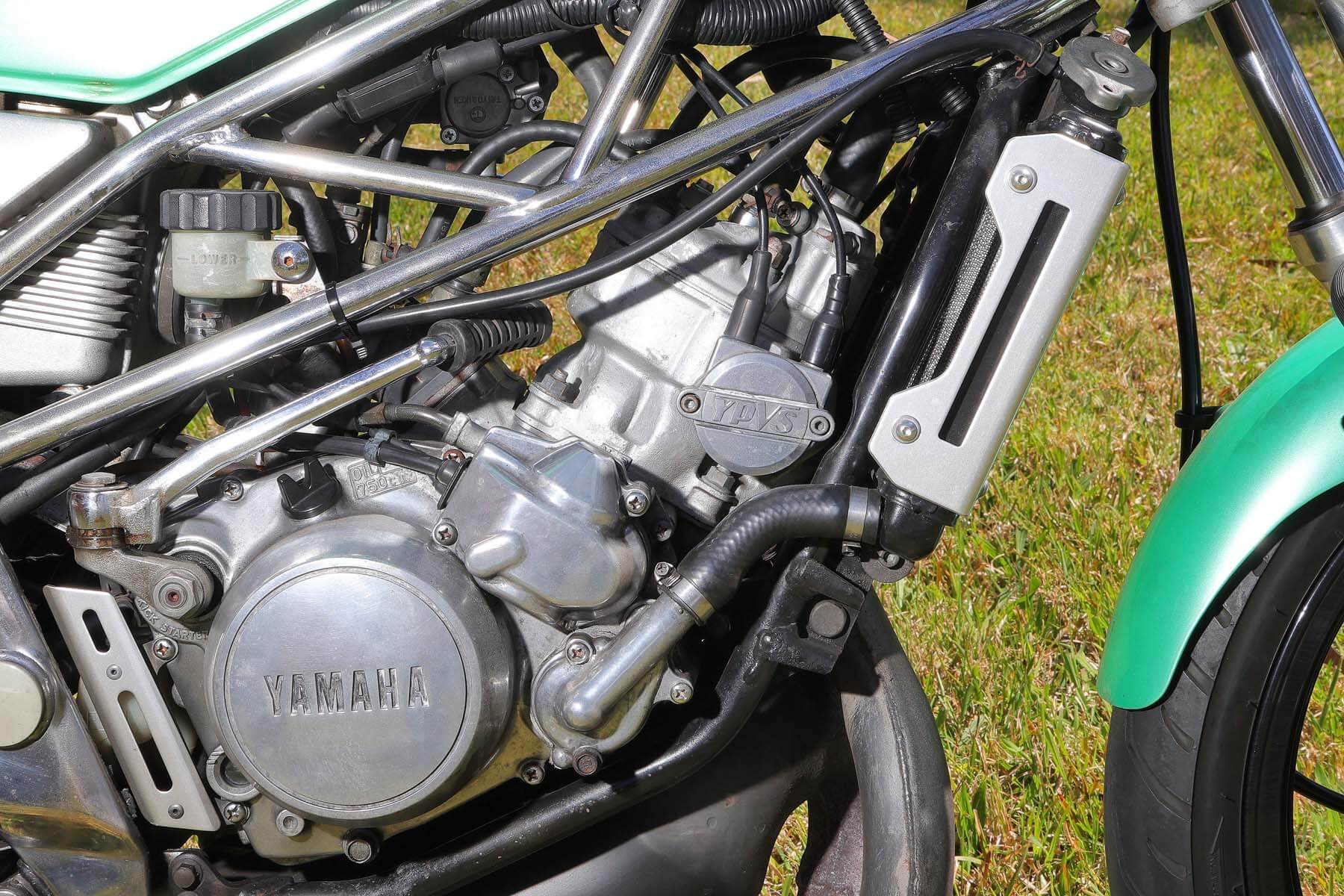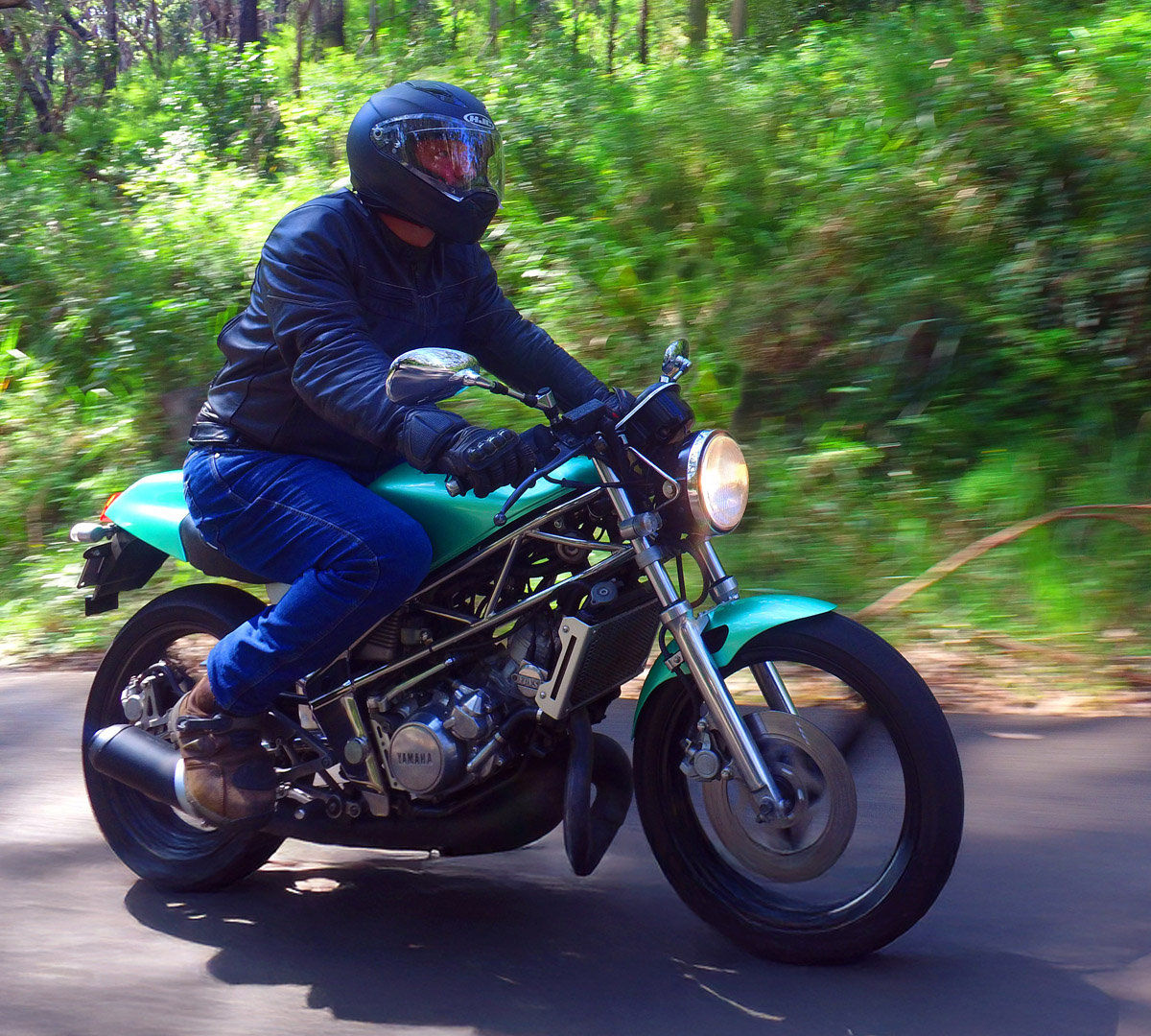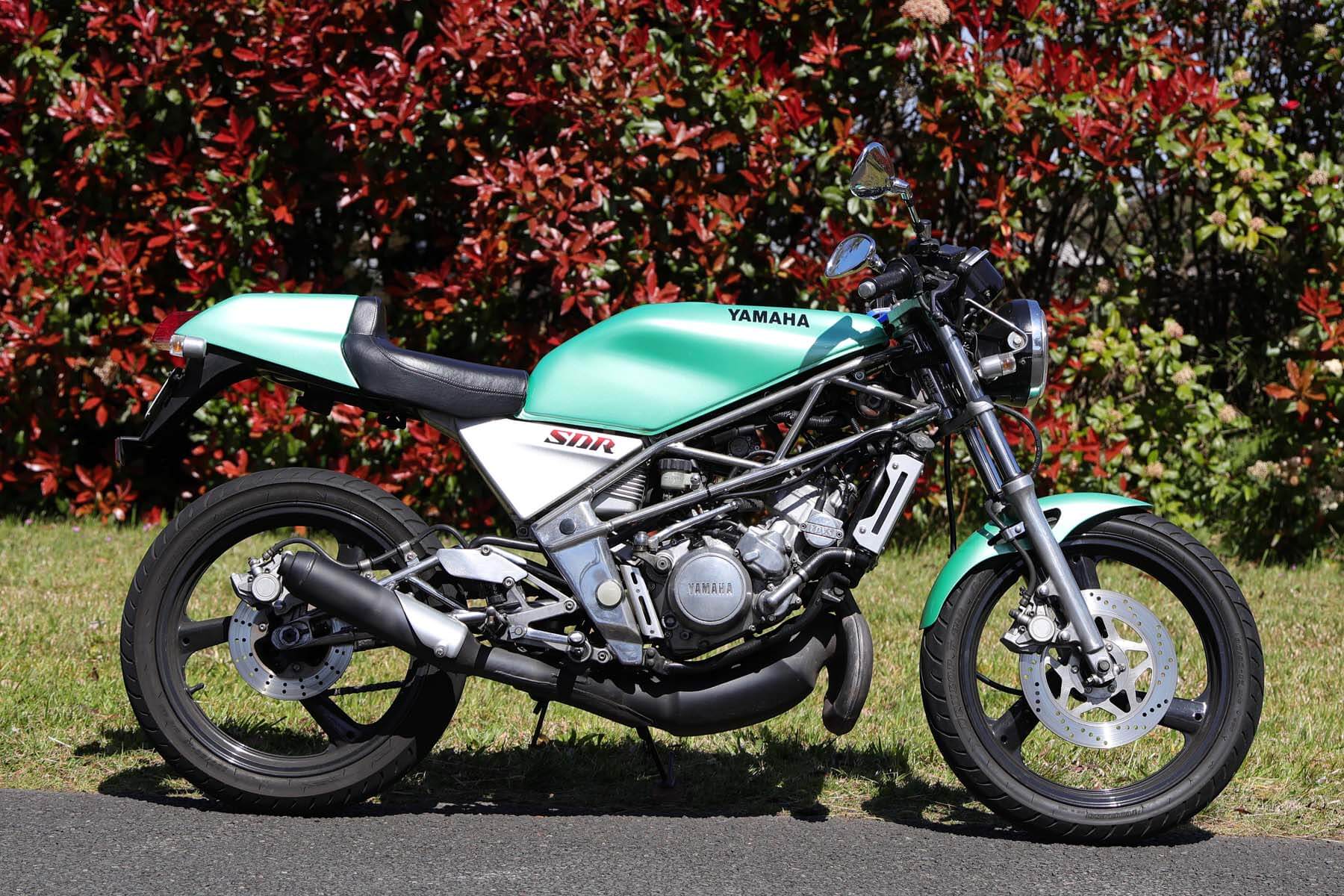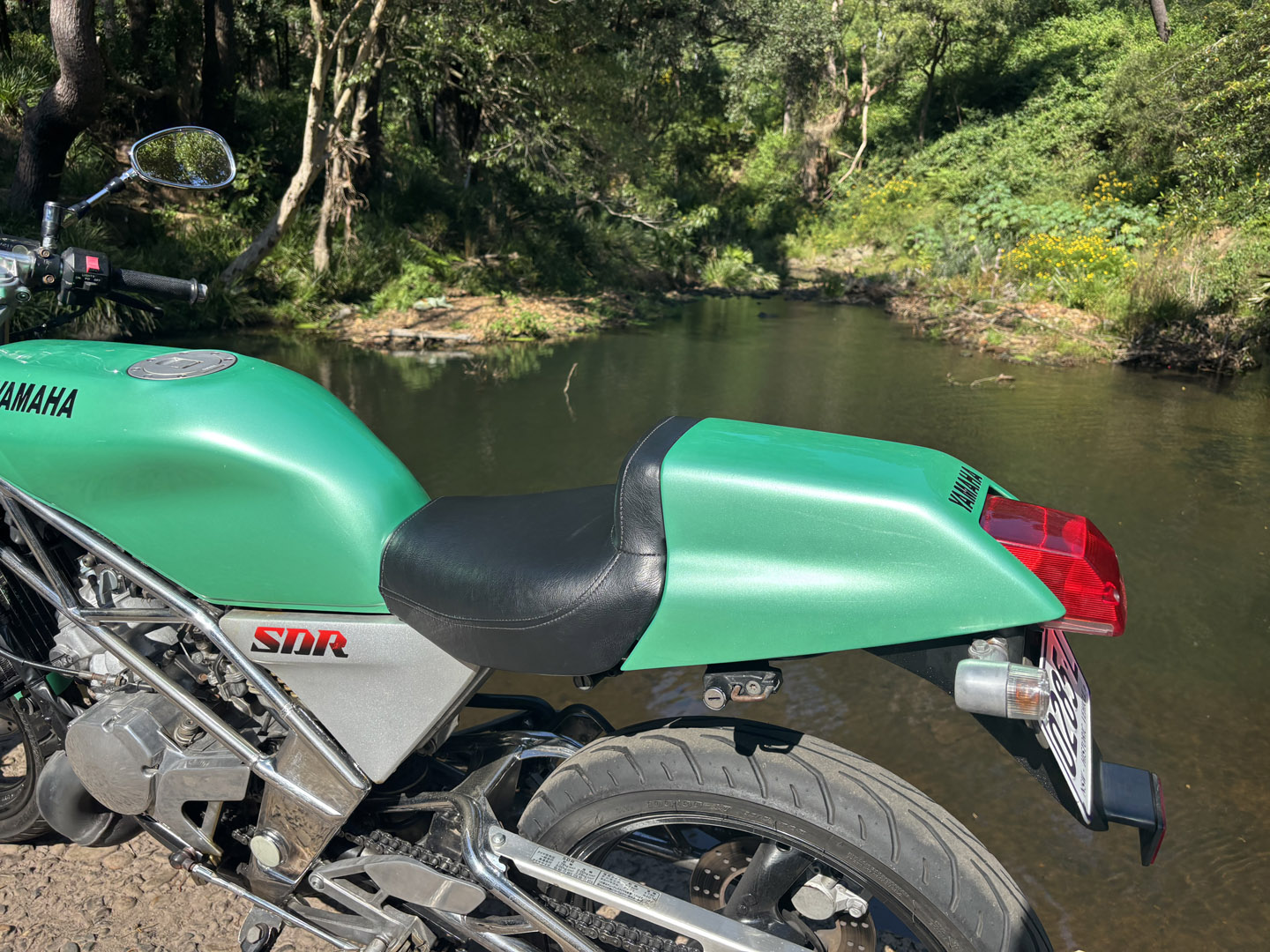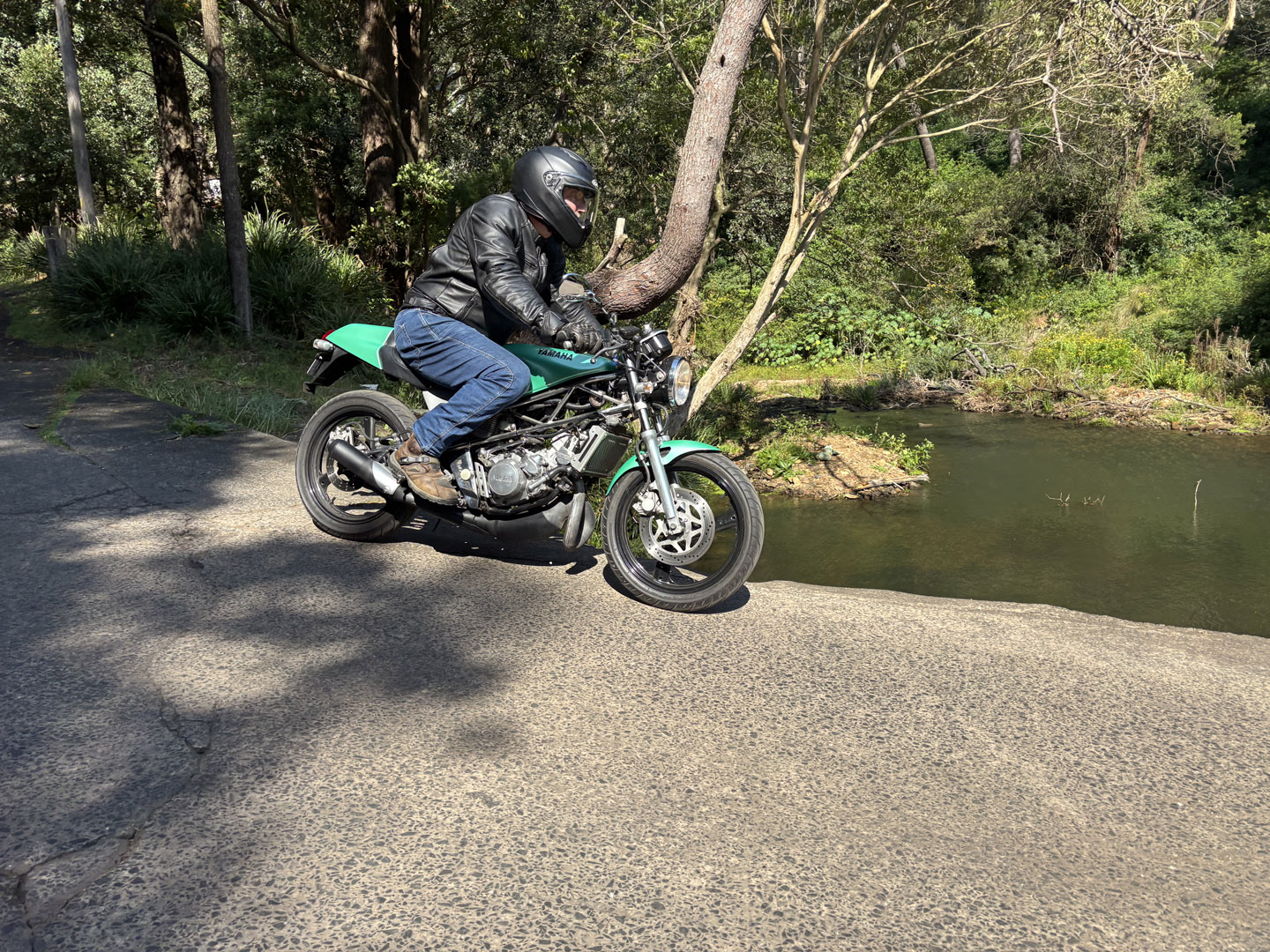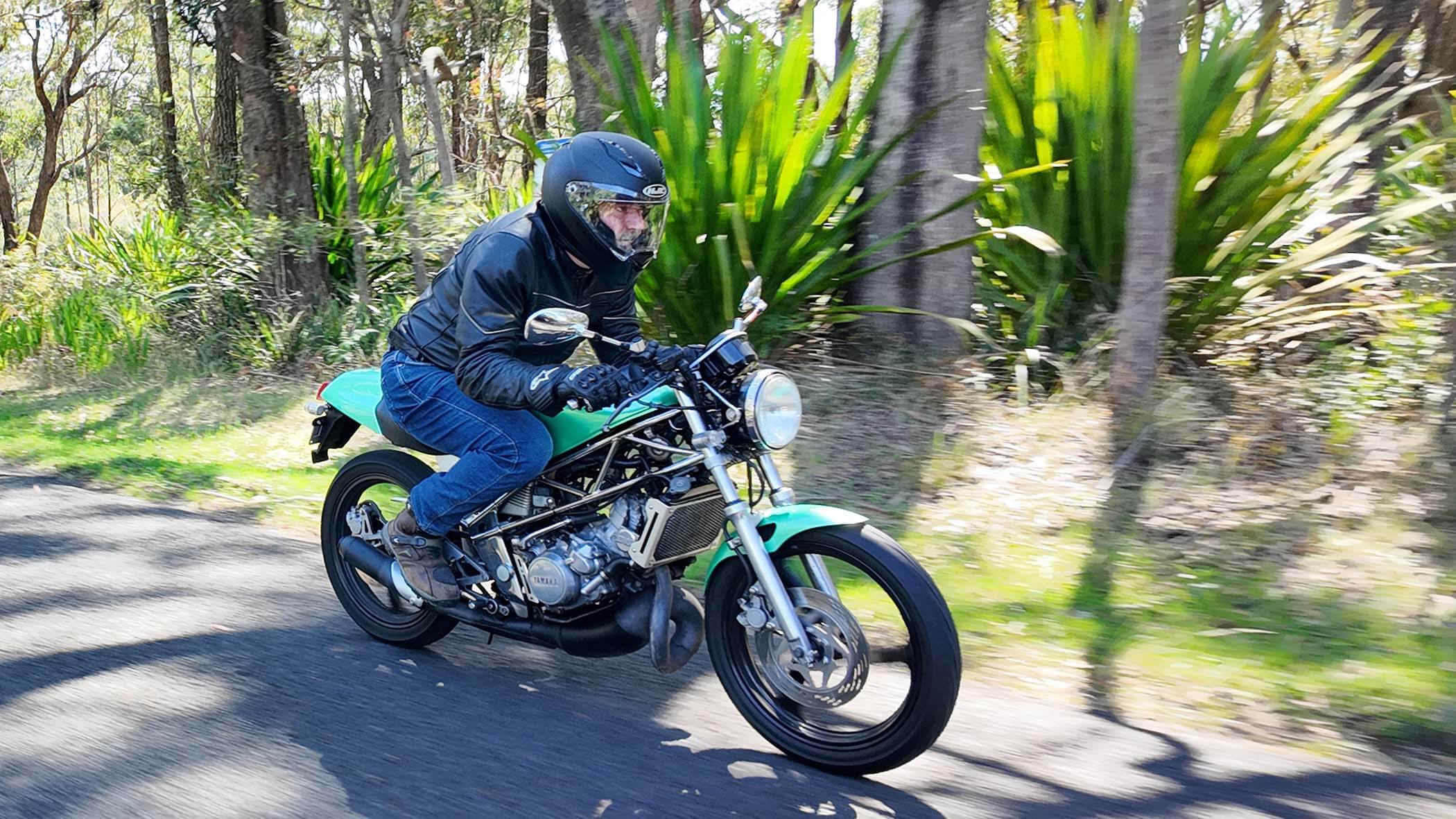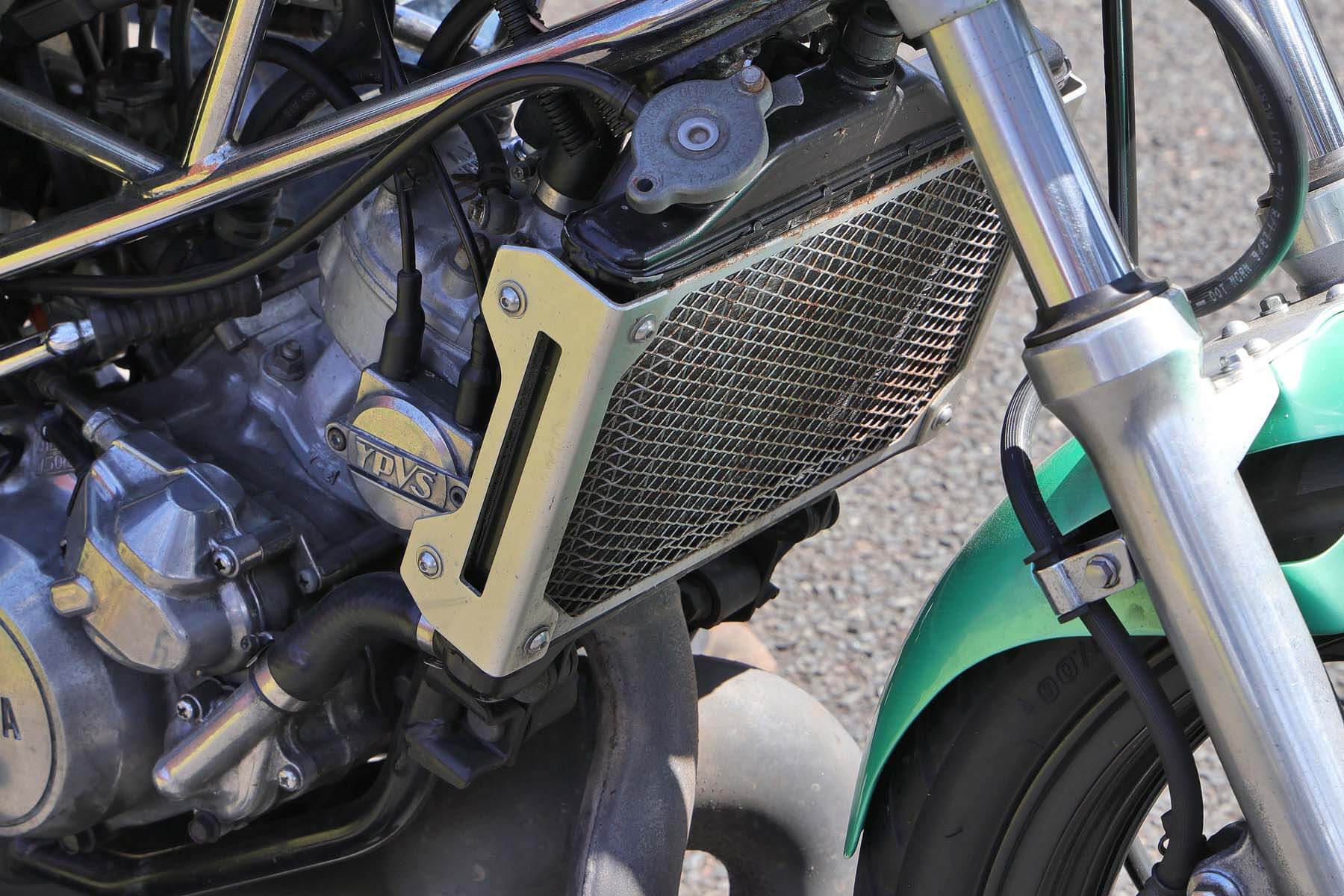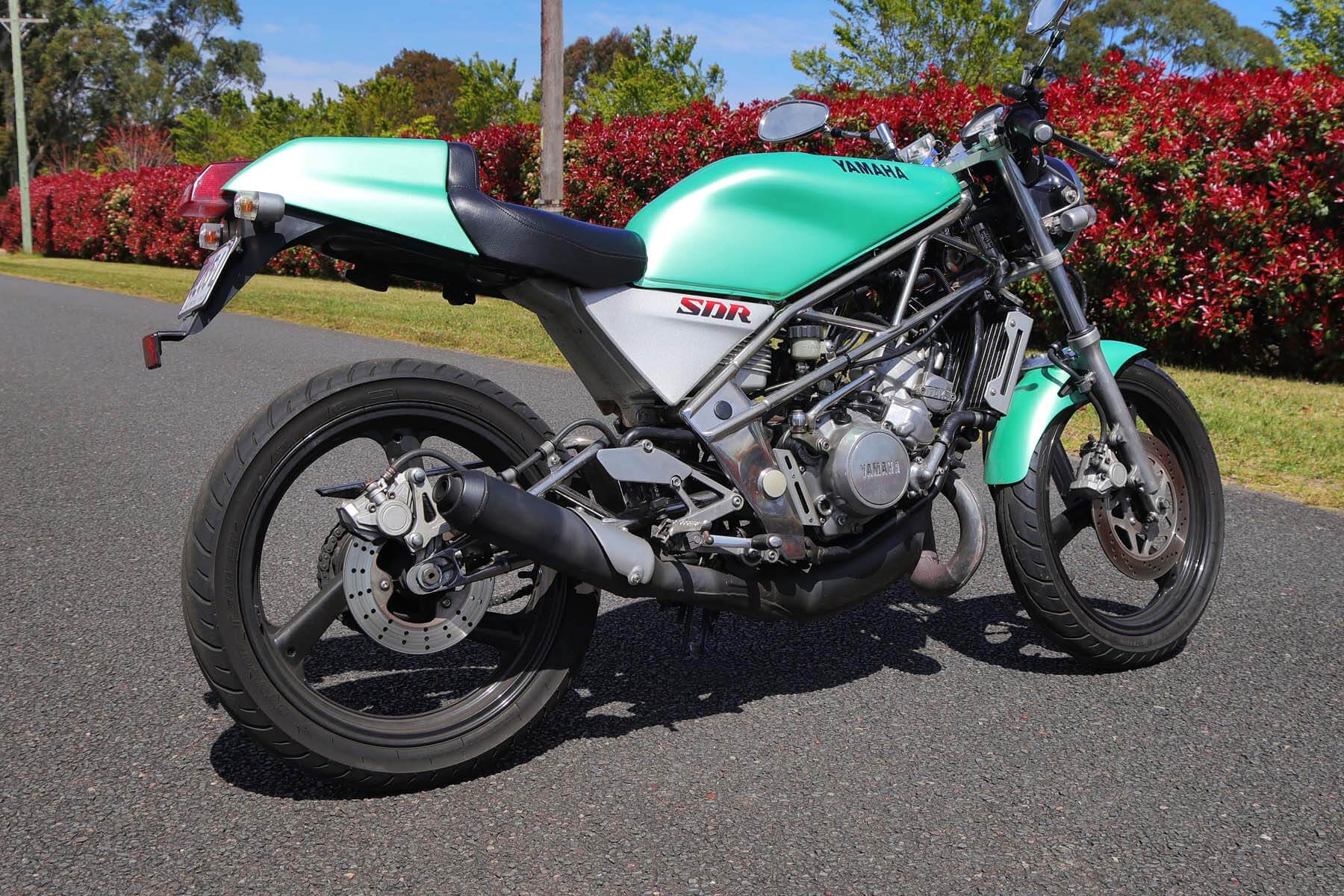Pete’s Whippet | Yamaha SDR 200
Light, Rare, Gorgeous and addictive 2-Stroke
Scrolling through Facebook Marketplace usually means wasted time looking at machines that are too far gone, too expensive, or just not quite right. But for Pete Kingston, one casual scroll turned into a once-in-a-lifetime discovery—a rare 1987 Yamaha SDR 200. Known among enthusiasts as “The Whippet,” this quirky little two-stroke Yammy is almost a forgotten model in Yamaha’s history. For Pete, spotting one for sale was love at first sight. “A mate sent me the link, and I instantly fell in love with it,” he recalls. “I didn’t know much about it, but I grabbed the ute straight away so I could bring it home if it checked out.”
-
That instinct turned out to be right. The Yamaha SDR 200 is rare enough in its homeland of Japan—only about 1,500 were built between 1986 and 1987—but in Australia, it’s almost mythical. Grey imports brought a handful across, but most riders have never seen one in the metal. “When I learned that so few were made, with just a handful reaching Australia, that made it even more appealing,” Pete says.
What makes the SDR so alluring is its minimalist design approach. At its heart lies a 195cc, liquid-cooled, two-stroke single-cylinder engine lifted from Yamaha’s DT200R off-road bike, tweaked with a slightly different piston, and paired with Yamaha’s YPVS exhaust system and a six-speed gearbox. On paper, it makes a modest 27 kW (35hp) @ 9000 rpm, but with a dry weight of just 105 kilograms, that translates into speed and agility that earned it the Whippet nickname. “What I was really after was a strong two-stroke engine—something retro to rekindle my childhood karting days,” Pete explains. “Turns out, the SDR 200 fitted the bill perfectly. I just never knew it.”
Two-strokes are often described as hopelessly addictive, and the SDR got its grip on Pete after just a few rides. “It delivers a broad spread of torque down low, then lunges into a surprising top-end rush when the YPVS valve opens,” Pete explains enthusiastically. “That hit of energy brings back memories of tearing around kart tracks as a kid. The power band is classic two-stroke—erratic, exciting, and happiest high in the revs,” he says with a grin.
.
Visually, the SDR 200 is as distinctive as it is rare. Its centrepiece is a chrome-plated molybdenum steel trellis frame that looks like something out of Bologna rather than Iwata. In fact, it predates Ducati’s Monster by six years. “The trellis frame is something unusual for a Yamaha,” Pete notes. “The fact that the design predates the Ducati Monster by six years makes it even cooler in my books. The chrome finish really makes the bike stand out.”
The machine’s bare-bones design is classic “if you can’t add power, add lightness” philosophy. There’s no pillion seat, no rev counter, and barely any bodywork—just a slim 9.5-litre tank, a single seat, and a minimal tail—but it looks gorgeous and seems fast even when standing still on its side stand. Pete’s bike has one deviation from standard: a bold green paint job that pops against the polished frame. “To my knowledge, other than the paint, the bike is still completely stock—original exhaust, intake, everything,” he says.
On the road, the SDR feels and handles as light as it looks. Pete rides it on local roads near home and occasionally through the twists of Sydney’s Royal National Park, where its agility comes alive. “It corners tight, feels incredibly light, and lets you really get low, especially on roads like the Royal National Park,” he says. Yamaha claimed a top speed of 100 mph, and while
i
Pete hasn’t stretched it that far, he’s found it can happily cruise at highway pace and around town. That’s not to say he isn’t tempted to push it further: “I’d like to take it out to Eastern Creek, just to see what it can really do.”
The SDR’s spec sheet reflects its purpose: 33mm forks, a mono-shock rear, a 267mm front disc with twin-piston calliper, and 17-inch three-spoke wheels shod in skinny tyres. Nothing exotic, but combined with that featherweight chassis, it’s more than enough to deliver thrills.
It’s the mix of rarity, design, and character that attracts Pete to the bike. It’s an intoxicating combination of minimalist styling, lightweight design, and an engine that begs to be revved, all wrapped in a frame that looks like artwork. “I’ve always loved small bikes. This one is perfect—fast, light, and playful,” Pete says. “For me, it’s more than just another machine in the garage. It’s a reminder of why I started riding in the first place.”
Sometimes all it takes is a mate’s Marketplace link and a bit of impulsive decision-making to line you up with a dream machine.


